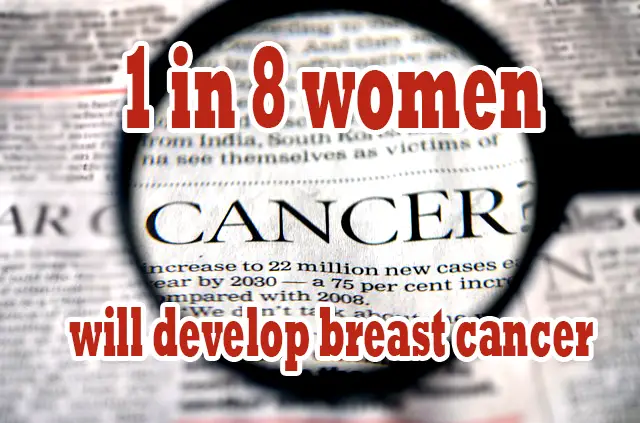For any woman who is born today, the chance of developing breast cancer during her lifetime is 1 in 8 (in the 1970s it was 1 in 10). In the beginning of 2012, there were 2.9 million U.S. women and thousands of men with a history of breast cancer.
Breast cancer like any other cancer can come back, and for these millions of people it is important that groundbreaking innovations in treatment are found. Yet after countless clinical trials and studies we are yet to see any real changes in the medical system.
Same Old Treatment Options
Despite the optimistic tone of “pink” charity walks and bake sales, treatment options for breast cancer have not changed in the last 20 years. Breast cancer is still fought with toxic chemotherapy drugs, disfiguring surgery, hormonal therapy and radiation, according to the National Breast Cancer Coalition (NBCC).
The NBCC’s 2011 report points to the fact that the majority of breast cancer research did not bring enough progress in the last 40 years. Statistics show that in the 1930s every 32 out of every 100,000 women in the U.S. female population died of breast cancer, and in 2005 that number is about 23, according to a graph at Cancer.org. In 2011 there was an estimated 232,620 new cases of breast cancer and 39,970 deaths from the disease.
Survival rate versus quality of life
While the official “survival rate” jumped from 86.8% in 1995 to 91% in 2007, according to the Surveillance, Epidemiology, and End Results Program (SEER), it is vital to remember that it is an only 5-year survival rate.
Mortality rate goes up from there by about 10% every 5-years. Instead of saying to a patient that they have a 91% chance of surviving, perhaps it would be more honest to say that they have a 91% chance of living for a couple more years with a strong chance of long-term side effects.
The side effects can be very serious. Surgery causes chronic pain in up to 30% of patients, also swelling and limited movement in the arm and shoulder is possible. Hormone therapy may be responsible for an early of heart attack, menopausal symptoms, memory problems and blood clots. Targeted therapy can cause high blood pressure and damage to multiple organs: the heart, thyroid gland, liver and kidneys. Bone-directed therapy may lead to osteonecrosis (bone damage) and loss of teeth. Depending on the type of chemotherapy used, the drugs can cause fatigue, anemia, depression, thyroid problems and a secondary chemotherapy-related cancer.
What does Cancer.org say about the two most often used treatments connection to secondary cancers?
Radiation: “Radiation therapy was recognized as a potential cause of cancer many years ago. In fact, much of what we know about the possible health effects of radiation therapy has come from studying survivors of atomic bomb blasts in Japan. We also have learned from workers in certain jobs that included radiation exposure, and patients treated with radiation therapy for cancer and other diseases.”
Chemotherapy: “Some types of chemotherapy (chemo) drugs have been linked with different kinds of cancer. The cancers most often linked to chemo are myelodysplastic syndrome (MDS) and acute myelogenous leukemia (AML)… Some solid tumor cancers have also been linked to chemo treatment for certain cancers, such as testicular cancer.”
Who dies from breast cancer?
Metastatic cancer is “cancer that has spread from the place where it first started to another place in the body,” according to Cancer.org. Breast cancer most commonly spreads to bone, brain, liver and lung.
A former Los Angeles Times staff writer Laurie Becklund wrote the following about battling metastatic breast cancer earlier this year: “I am dying, literally, at my home in Hollywood, of metastatic breast cancer, the only kind of breast cancer that kills…” Becklund died Feb. 8 this year. Her whole story can be read here.
While it is estimated that almost 30% of all breast cancer cases become metastatic, these cases are not counted as cancer deaths because the death certificates will often say instead died of cardiac arrest or liver failure.
“If you know someone who has died from breast cancer, they died from metastatic breast cancer. Most people don’t know that, and even fewer people understand that. Despite that fact, only 2% of money for breast cancer research is dedicated toward understanding metastatic breast cancer, or finding solutions to significantly extend the lives of those living with the disease,” states METAvivor, a non-profit MBC patients’ advocacy organization.
Unlike Susan G. Komen Breast Cancer Foundation’s obsession with pink ribbons, METAvivor focuses less on symbolism and more on finding answers. When doing research about what non-profit to donate to, read reviews such as on GuideStar.org, and see for yourself why does METAvivor have an average 5-star review from 44 people, and Komen an average of 1-star from 673 people. Or, consider doing research on the countless thousands of people who have reversed their cancer holistically and figure out how you can best support those organizations, rather than buying into a tired, outdated modality for cancer “research” that clearly isn’t helping much.
This article is for informational purposes only and should not constitute medical advice. Consult a licensed naturopathic doctor for more information.
***
Want to learn more about the most effective ways to prevent and beat cancer? Watch the Truth About Cancer, a 9-part documentary NOW.
Thanks for installing the Bottom of every post plugin by Corey Salzano. Contact me if you need custom WordPress plugins or website design.







